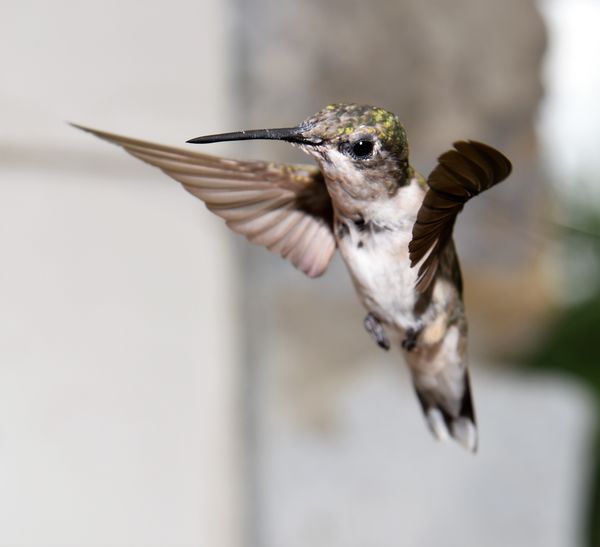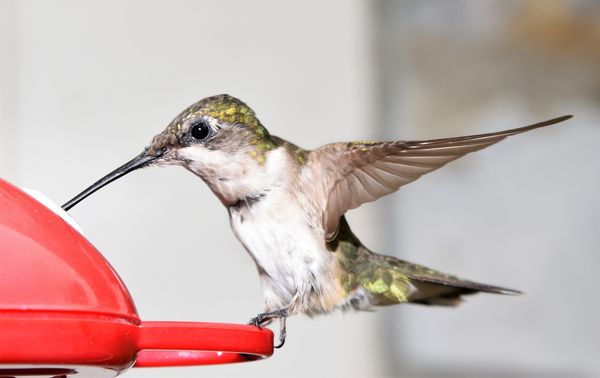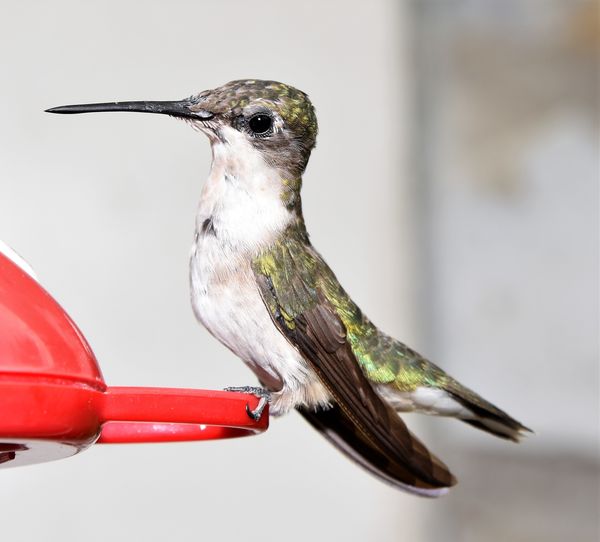High Speed Flash Sync
Aug 21, 2018 12:53:46 #
Rickhstudio wrote:
I have a Canon 580EX flash and a 5D MkIV. I am tak... (show quote)
Set your flash power way down (it saves batteries and makes recycling way faster)!
Aug 21, 2018 12:59:11 #
Angel Star Photography
Loc: Tacoma, WA
Rickhstudio wrote:
To all- It worked for full high speed burst to buffer being full at 1/32 power and below. At 1/16 power the flash stopped after 6 high speed burst shots. I'll let you know if a battery pack affects that.
Thanks again- now, I have to go take some pictures.
Thanks again- now, I have to go take some pictures.
One other thought perhaps already considered are the batteries. Alkaline batteries typically cause a long cycle time on the flash. Ni-MH rechargeables help to obtain a shorter cycle time.
Aug 21, 2018 14:17:57 #
Aug 21, 2018 15:22:44 #
Angel Star Photography
Loc: Tacoma, WA
Rickhstudio wrote:
Angel- Thanks. Do you know if Lithium cycles longer or shorter?
I would not recommend Lithium batteries. They do get hot and could cause damage to your flash. I took a look at the manual for the 580EX and while it states that lithium can be used, there have been others who have experienced issues as I have described. Interestingly, the 600EX II RT manual states the following:
"Note that certain AA/R6 lithium batteries may become extremely hot in rare cases during use. Due to safety reasons, do not use AA/R6 lithium batteries."
Additionally, I offer the following post:
http://travelthroughpictures.com/photo-items/lithium-batteries-bad-flash/
Aug 21, 2018 15:29:12 #
Angel- Thank you, thank you...saved me time AND money. I'll just go with the added battery pack. Don't want to have my flash burn out in the middle of the hunting lease. Not a fun trip.
Aug 21, 2018 18:33:16 #
TomV
Loc: Annapolis, Maryland
My understanding of flash "power" is not the intensity of the light but the duration of the light pulse. Thus a shorter pulse uses a lot less of the energy stored in the capacitor, allowing of a quick recharge time.
If you set your camera to be dark (low iso, small aperture) the shot without flash will be dark even with 1/250 shutter speed. The addition of the flash will freeze the shot to the duration of the pulse even with a shutter opened for a longer time. The flash specs should be based on the flash duration for a particular setting.
I use a flash from Adorama that uses Li-on and the refresh rates are about 2 seconds or so for a medium power level.
If you set your camera to be dark (low iso, small aperture) the shot without flash will be dark even with 1/250 shutter speed. The addition of the flash will freeze the shot to the duration of the pulse even with a shutter opened for a longer time. The flash specs should be based on the flash duration for a particular setting.
I use a flash from Adorama that uses Li-on and the refresh rates are about 2 seconds or so for a medium power level.
Aug 21, 2018 23:18:04 #
The basic answer is that regular flash pulses once during the time the shutter moves across the sensor.
During High speed sync, the flash pulses many times during the time the shutter moves across the sensor giving the effect of constant light just like taking a picture with the sun or a bright light on the subject. The amount of light produced by the flash is less because it has to flash so many more times instead of giving all its light in one brief pulse.
To do a burst flash shooting of 7 or more frames per second, The power on the flash must be reduced so that the capacitors can recharge and fire many, many times.
Through experimenting, I have found that with an auxiliary battery pack on my flash (580EX) on high speed sync with the power set on 1/16 and the camera at 1/8000 sec shutter speed I can take pictures in burst mode until the buffer in the camera loads up. I can take 6 shots at 1/8 power before the flash has to cycle and 3, maybe 4 shots at 1/4 power. These may not be completely accurate because I didn't let the flash cool between sets of shots. Still, a lot can be done by manipulating the ISO and fstop to get the exposure that will work with high speed flash in burst mode.
Once I can get the hummingbirds to cooperate I'll show some samples
During High speed sync, the flash pulses many times during the time the shutter moves across the sensor giving the effect of constant light just like taking a picture with the sun or a bright light on the subject. The amount of light produced by the flash is less because it has to flash so many more times instead of giving all its light in one brief pulse.
To do a burst flash shooting of 7 or more frames per second, The power on the flash must be reduced so that the capacitors can recharge and fire many, many times.
Through experimenting, I have found that with an auxiliary battery pack on my flash (580EX) on high speed sync with the power set on 1/16 and the camera at 1/8000 sec shutter speed I can take pictures in burst mode until the buffer in the camera loads up. I can take 6 shots at 1/8 power before the flash has to cycle and 3, maybe 4 shots at 1/4 power. These may not be completely accurate because I didn't let the flash cool between sets of shots. Still, a lot can be done by manipulating the ISO and fstop to get the exposure that will work with high speed flash in burst mode.
Once I can get the hummingbirds to cooperate I'll show some samples
Aug 22, 2018 02:38:19 #
Angel Star Photography
Loc: Tacoma, WA
Rickhstudio wrote:
Angel- Thank you, thank you...saved me time AND money. I'll just go with the added battery pack. Don't want to have my flash burn out in the middle of the hunting lease. Not a fun trip.
You are welcome, Rick, and glad to have helped. Good luck and enjoy your trip.
C. R. Smith (Charles)
Angel Star Photography
www.angelstarphotography.com
Aug 22, 2018 06:58:02 #
On a your D7200 you might have high speed flash available. Check you custom setting under bracketing/flash. The first item will be 1/250 (auto FP). Select OK and your set. Now you can use any of the shutter speeds up to and including 1/8000. I've set my D3, D800, D810, D600 and Df to this setting as soon as I get hold of the camera. You can use (Auto FP) on M, S, A, & P. The only problem with 1/16 power is that its limiting the power output to a distance of 2 feet. Your flash will be about 2'-0" from the subject This is how some shoot hummers with multiple flashes. I shoot birds (warblers) with flash at shutters speeds od 1/2000 to 1/2500. I shoot hummers with one flash at shutter speeds of 1.400 to 1/5000, I shoot bounced flash at my nephew's boy at 1/2000,
Aug 22, 2018 08:35:23 #
Is your flash mounted on-camera? If so is it possible to mount off-camera and move the flash closer to the birds? The decrease in distance will allow you to select a lower power setting and get more flashes per burst.
Aug 22, 2018 09:00:51 #
You might find this article helpful......https://www.bhphotovideo.com/explora/content/secret-photographing-hummingbirds
Rickhstudio wrote:
I have a Canon 580EX flash and a 5D MkIV. I am tak... (show quote)
Aug 22, 2018 09:22:40 #
gvarner
Loc: Central Oregon Coast
drklrd wrote:
I have never heard of a flash syncing at that high... (show quote)
If your D7200 is like my D7000, it does sync at faster than 1/25o, all the way up to my max of 1/8000. Can't remember which menu setting it is but it's there. I use it all the time to darken a bright background outdoors with my SB600 in TTL mode and the camera in Manual. It does reduce the reach of the flash but you can increase the ISO to help compensate for that.
Aug 22, 2018 09:44:46 #
GLKTN
Loc: TN
Rickhstudio wrote:
I have a Canon 580EX flash and a 5D MkIV. I am tak... (show quote)
I set up my camera about 2 feet from my feeder with flash on camera. Flash was set less than 1/1 maybe 1/4 in manual. I just played around until I got the exposure I wanted.. Used a remote shutter release. Exposure 1/250, f10, ISO 400.



Aug 22, 2018 09:47:42 #
GLKTN
Loc: TN
GLKTN wrote:
I set up my camera about 2 feet from my feeder with flash on camera. Flash was set less than 1/1 maybe 1/4 in manual. I just played around until I got the exposure I wanted.. Used a remote shutter release. Exposure 1/250, f10, ISO 400.
I used a Nikon d750 with 24-120 f4 lens. f250 is high speed sync in this camera.
Aug 22, 2018 09:53:15 #
Rickhstudio wrote:
I have a Canon 580EX flash and a 5D MkIV. I am tak... (show quote)
Yes, you can reduce the power when in HiSpeed Sync mode on the flash. But remember, when you use a speedlite in HiSpeed Sync, you lose about 2 and a half times it's power already. So the flash has to be much closer to the subject than it would if you were not in HSS.
If you want to reply, then register here. Registration is free and your account is created instantly, so you can post right away.



